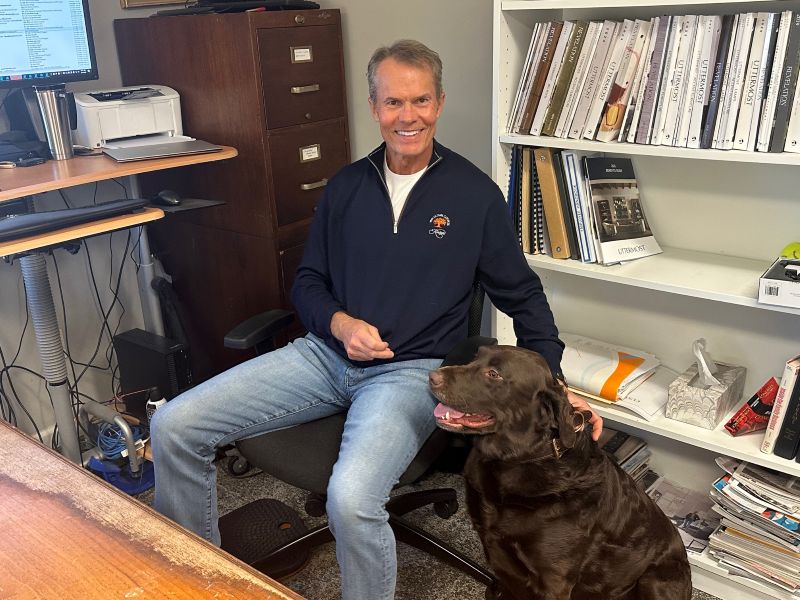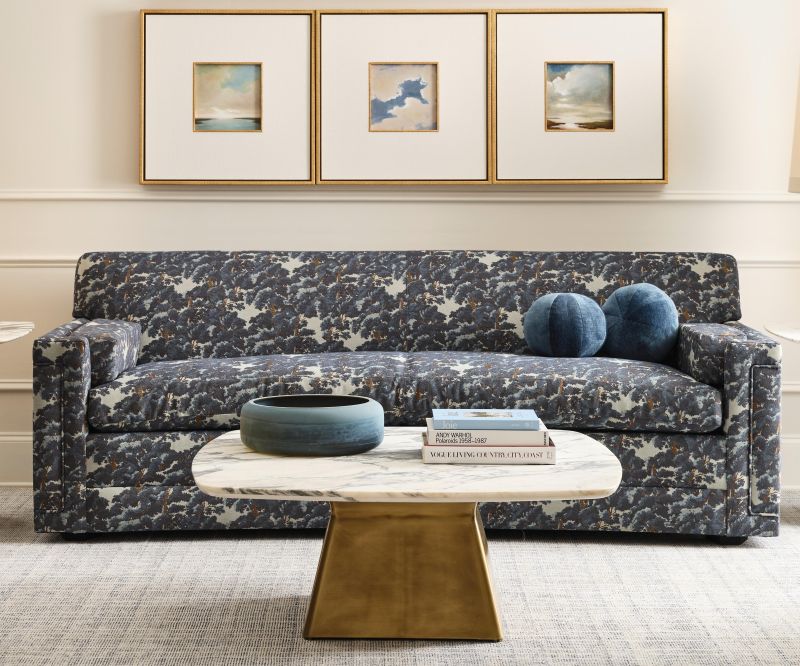Incremental growth has created new opportunities, including the launch of outdoor furniture at the upcoming High Point Market
Editor’s note: for a video interview with Mac Cooper, scroll down to the bottom of the story.
ROCKY MOUNT, Va. — As the company celebrates 50 years in business this year, Uttermost President and CEO Mac Cooper uses the past as a guide to how the company will position itself to grow in the future.
Launched by his parents, Bob and Belle Cooper, in 1975, the company got its start in art, mirrors and other wall décor, which remained the bulk of its business until around 2002 when it got into portable lighting. The company also sold some small furniture items by that point, but didn’t more fully develop its furniture line until around 2008-09, Cooper noted.

Today, furniture remains its largest single category for both Uttermost and sister brand Revelation as the company has steadily broadened its line to include occasional and accent furniture, bedroom and dining furniture, living room seating, display units and etageres, and more.
The line is about to grow even further as the company is adding outdoor home furnishings at the upcoming High Point Market, with some 175 SKUs of upholstery (cushions/fabric and wicker items), furniture (dining, chairs/bar and counter stools, occasional tables), wall décor, lamps and accessories.
To facilitate its expanded mix over the years, the company also has broadened its sourcing network to include China, India, Indonesia and Vietnam. It has also received product from countries such as Mexico and the Philippines, but those four other countries have remained the most important part of its sourcing network.
“As far as furniture, everything has been incremental,” Cooper told Home News Now about the company’s strategic and steady growth over the past 16 years.

Contrasting this with the growth-through-acquisition strategy of companies like Hooker Furnishings and Surya, he noted, “Our growth has been organic and in incremental steps. And in furniture, it has been very much that, starting with accent furniture and then getting into modular seating and then consoles that are 100-plus inches. … We haven’t taken giant leaps.”
Of course, the company did take a small leap when it introduced Revelation in 2015. Although it offered similar categories as Uttermost, it was primarily a step-up line that sought a different audience.
As the target customer for Revelation was primarily designers and more boutique/upscale retailers, the furniture was more luxurious and larger in size than the pieces offered at Uttermost, which was sold to more mainstream retailers and e-commerce platforms, which meant it also was shipped in smaller parcel format.
As Uttermost had also developed a following among designers and upscale retailers, the timing was right for a more upscale line, Cooper said, noting that Uttermost was considered a lower-priced line for many of those customers.
“We had the customers and we had the sales representatives that could reach that higher-end retailer or designer and work with them at a higher level with higher-level products,” he said, noting that Revelation currently represents as much as 40% of its residential sales volume. “And we had the factories, so it felt like all the pieces of the puzzle were there. It was the right time to pull the trigger to start a higher-end brand and we took it very seriously.”
As the pieces are unique to each line, it was difficult for Cooper to pinpoint specific differences in pricing for Uttermost and Revelation. But pointing to a dining table where he and national sales manager Scott Doyle were seated during a recent interview with Home News Now, he summed up the difference in the following way: “If this table were in Uttermost, it would be how can we engineer it and make it more efficient in the packaging, and how can we make it more efficient in the materials. Is there something we can do to engineer this to be a little smarter?”

“If this were Revelation, we would be saying, how can we make it even more special,” he said, noting that pieces in Revelation might feature things like more custom, solid brass hardware and solid wood components versus the largely veneered aspect or plated hardware seen in Uttermost. “What can we add to it? And we would not be concerned about the packaging because we would crate it.”
This spring marks Uttermost’s latest growth initiative, a move into outdoor furniture. Here, Cooper acknowledges the scope and breadth of the project, which has been in development for more than a year.
“Now we are about to enter outdoor — I call that more of a leap,” Cooper said of the line, which is sourced primarily in Vietnam, India and Indonesia. “But even that is more organic in respect to how we are doing it.”
But he said that the company is all in with the category, devoting both space in its High Point showroom and inventory in its warehouses to the product line.
He said that the company decided to enter the category based on interest from retailers. Some of this had its roots from the pandemic when consumers wanted to create an outdoor living space that was an extension of their homes, be it a patio, a sunroom or a screened-in living area.
In addition, he noted that outdoor furniture has a durability story that can appeal to families with young children, thus serving a purpose inside the home with performance types of fabrics, not to mention styles that are suitable for indoor use.
“It’s been years of hearing ‘When are you guys going to do outdoor?’” Cooper said. “We have many customers that look to us for product and they would love to buy outdoor from us. … I just feel like that category is going to stay strong, and we have the capability and the capacity and most of the ingredients to be very successful in outdoor.”

Looking forward, the company plans to expand the outdoor line even further in the future, adding categories that are not part of the mix this time around.
With outdoor and other segments of its business, be it accents, occasional, bedroom or dining furniture, the company sees tremendous potential in the years ahead as it continues to become more important to its customer base. While brick and mortar may still be a challenge, the company said other opportunities continue to surface that represent growth areas for the brand.
“It seems like we are getting a lot of inquiries from model home builders and the construction side of it,” said Scott Doyle, adding that interior designers and specialty shops also continue to step up. “There are a lot of interior designers that are coming in, and we have gotten more aggressive in the last few years trying to be more important industry partners with ASID (American Society of Interior Designers) and IDS (Interior Design Society) and tap into those organizations.”
For Cooper, the future growth and success of the company also is about maintaining core principles of quality, service and trust that its customer base has come to expect and value over the many years.
“I love hearing from customers when they say how important we are to their business, and that ‘I can do a whole home with you,’” he said. “’And if I have an issue, I know that you will take care of it.’”
Looking forward, he added, “We are poised for tremendous growth with all of our brands. We are so well positioned in my opinion. … We have a lot of things that we can’t control including outside circumstances such as the economy or housing. But for what we can control, I could not feel better about where we are. We have the horsepower, we have the manpower and we have the talent to just achieve great things in the future.”
Of the outdoor line in particular, he noted, “It’s exciting and I think we are going to get a lot of attention for that. A lot has gone into it.
“We are really excited about the years ahead and are never content with our current performance. But I think of it as incremental improvements in all that we do — our service to our customers, our shipping times to customers, our management of freight costs for our customers, our product development, the quality of our designs. … If we are not raising the bar, we are not doing our job.”




